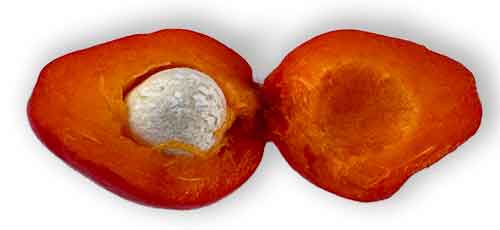
Family • Myrtaceae
Ticao
Tulisayan
Eugenia reinwardtiana (Blume) DC.
CEDAR BAY CHERRY / AUSTRALIAN BEACH CHERRY
| Scientific names | Common names |
| Eugenia carissoides F.Muell. | Ticao (Asbate, Bisaya) |
| Eugenia costenoblei Merr. | Tulisayan (Ibanag) |
| Eugenia hypospodia F.Muell. | Tumaluhu (Ibanag) |
| Eugenia kangeanensis Valeton | Australian beach cherry (Engl.) |
| Eugenia koolauensis var. glabra O.Deg. | Beach cherry (Engl.) |
| Eugenia macrohila C.T.White & W.D.Francis | Cedar bay cherry (Engl.) |
| Eugenia rariflora Benth. | Mountain stopper (Engl.) |
| Eugenia rariflora var. parvifolia Hillebr. | Reinwardt's cherry (Engl.) |
| Eugenia reinwardtiana (Blume) DC. | |
| Eugenia reinwardtiana f. lutea H.St.John | |
| Eugenia waianensis O.Deg. | |
| Jambosa maritima Miq. | |
| Jossinia costenoblei (Merr.) Diels | |
| Jossinia desmantha Diels | |
| Jossinia reinwardtiana (Blume) Blume | |
| Jossinia tahitensis Nadeaud | |
| Myrtus reinwardtiana Blume | |
| Eugenia reinwardtiana is an accepted species. KEW: Plants of the World Online | |
| Other vernacular names |
| CHAMORRO: A'abang. |
| HAWAIIAN: Ni oi. |
| PALAU: Kesiil. |
| OTHERS: Vebevene. |
•  Bushy to sprawling shrub to 2m. Leaves: Opposite, wide-oval, to 8x6cm, glossy green, edge smooth and strongly down-curved, base round, tip round; stalk 4mm. Flowers: Axillary, 1-2; 2cm; petals 4, white, wide-oval, tip round; stamens many, ~100, 5mmL, white. Fruit: Round, 2cm, ripen bright red, fleshy, with 1-2 large seeds; tip with sepals persistent. (9)
Properties Availability |
April 2025
![]()
 |
| Â Â Â Â Â Â Â Â Â Â Â Â Â Â Â Â Â Â Â Â Â Â Â Â Â PHOTOS / ILLUSTRATIONS |
| Photos © Godofredo Stuart / StuartXchange |
Additional
Sources and Suggested Readings |
• |
DOI: It is not uncommon for links on studies/sources to change. Copying and pasting the information on the search window or using the DOI (if available) will often redirect to the new link page. (Citing and Using a (DOI) Digital Object Identifier) |
| Â Â Â Â Â Â Â Â Â Â Â Â Â Â Â Â Â Â Â Â Â Â Â Â Â Â Â Â Â Â List of Understudied Philippine Medicinal Plants |
| Â Â Â Â Â Â Â Â Â Â Â Â Â Â Â Â Â Â Â Â Â New plant names needed The compilation now numbers over 1,500 medicinal plants. While I believe there are hundreds more that can be added to the collection, they are becoming more difficult to find. If you have a plant to suggest for inclusion, native or introduced, please email the info: scientific name (most helpful), local plant name (if known), any known folkloric medicinal use, and, if possible, a photo. Your help will be greatly appreciated. |
• |
 |

 Gen info
Gen info Distribution
Distribution Folkloric
Folkloric